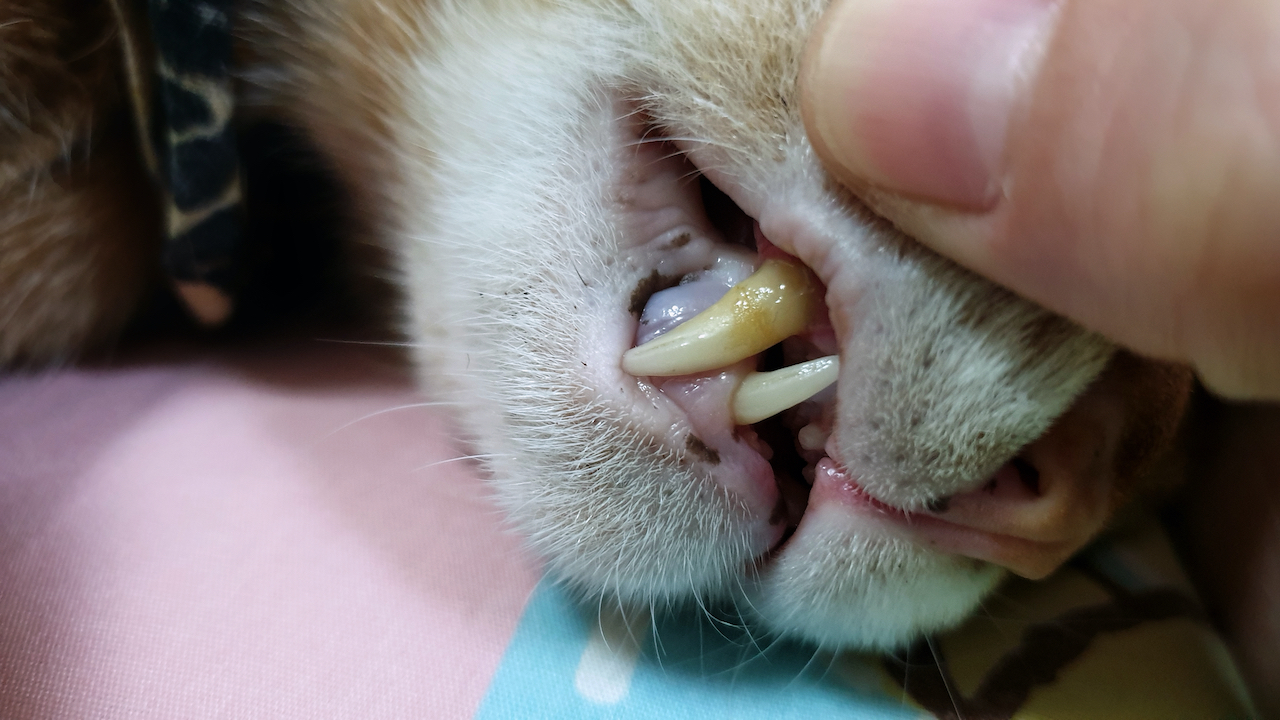
10 Nov Signs of Dental Disease in Dogs and Cats
When it comes to our beloved pets, their health and well-being are of the utmost importance. While we often focus on aspects like nutrition, exercise, and routine check-ups, one crucial aspect that sometimes goes unnoticed is dental health. Periodontal disease is a common yet often overlooked condition in dogs and cats, affecting not only their oral health but also their overall well-being. In this blog, we will delve into the subtle signs of periodontal disease in our furry friends and shed light on the importance of veterinary dental care.
- Foul Breath: Believe it or not, dogs and cat should not always have bad breath! One of the earliest signs of periodontal disease is halitosis. While it’s normal for pets to have a certain odor, persistent foul breath can indicate a buildup of bacteria in the mouth. This bacteria can lead to plaque and tartar formation, which, if left untreated, can progress to more severe stages of periodontal disease.
- Gingivitis: Red, swollen, and bleeding gums are classic signs of gingivitis, the initial stage of periodontal disease. Pet owners may notice their dog or cat exhibiting discomfort while eating or pawing at their face. Regularly inspecting your pet’s gums for any changes in color or texture can help catch gingivitis early on.
- Changes in Eating Habits: Dogs and cats with periodontal disease may experience pain and discomfort while eating. Consequently, they might exhibit changes in their eating habits, such as reluctance to eat, chewing on one side of the mouth, or dropping food. If you observe any alterations in your pet’s eating behavior, it’s essential to consult with a veterinary dental specialist.
- Excessive Drooling: Increased drooling can be a sign of oral discomfort. Excessive salivation may indicate that your pet is dealing with pain, inflammation, or irritation in the mouth. While some drooling is normal, any sudden or noticeable increase should be investigated promptly.
- Tooth Discoloration or Loss: As periodontal disease advances, it can lead to tooth discoloration, mobility, or even tooth loss. Inspecting your pet’s teeth regularly can help identify any abnormalities. Discolored or loose teeth may be indicative of advanced stages of periodontal disease, requiring immediate attention from a veterinary dental specialist.
- Changes in Behavior: Pets experiencing oral pain may exhibit changes in behavior. This can include increased irritability, reluctance to be touched around the mouth, and a generally subdued demeanor. Monitoring your pet’s behavior for any deviations from their usual habits can provide valuable clues about their dental health.
Periodontal disease is a common yet preventable condition that can significantly impact the well-being of our furry companions. Regular dental check-ups and proper at-home dental care, such as brushing your pet’s teeth and providing dental treats, can go a long way in preventing and managing periodontal disease. If you notice any of the signs mentioned above, don’t hesitate to schedule a consult with Apex Veterinary Specialist. By prioritizing your pet’s oral health, you’re not only ensuring a happy smile but also contributing to their overall health and longevity.



